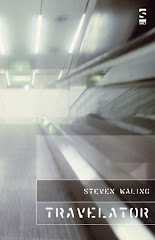why does the poet end
the line herenot
there for instance?
They took to them both without much persuasion. Some prefered Harwood's lightness, others MacSweeney's heaviness but that I suspect had more to do with their respective tastes for light and dark anyway. Nobody had any difficulty with them.
Interesting that. There is this strange idea that the avant garde is "difficult" but when you introduce people to the avant garde without telling them it is, they don't seem to mindat all.
Of course, I didn't show them any JH Prynne or Drew Milne. I didn't show them any Bob Cobbing (though the recent exhibition of his work in Bury went down well, I believe) or face them down with US Language poetry. It was perhaps the more comprehensible end of the avant garde, nevertheless...
I don't think there's anything wrong with trying to widen peoples' perspective, especially if there are parts of the poetry world that most people don't usually have access to. Lee Harwood's Collected is a delight: both experimental and airy, open and free-wheeling. I'm less of a fan of MacSweeney's, though I don't know it well apart from A Book of Demons and Pearl
The avant garde poetry world does tend to be harder to access than the mainstream, I guess - like free jazz improv, it goes on on the sidelines. Some of the protagonists probably like it like that - it gives them a sense of superiority, and feedstheir persecution complex - but getting more readers/listeners to find out about you is no bad thing, in my opinion.

2 comments:
Which poems did you use?
I used "Gorgeous" by Lee Harwood, and a poem by MacSweeney that was part of the Pearl sequence. A late sequence, and neither poem I'd call the most hardline modernist poem.
Post a Comment